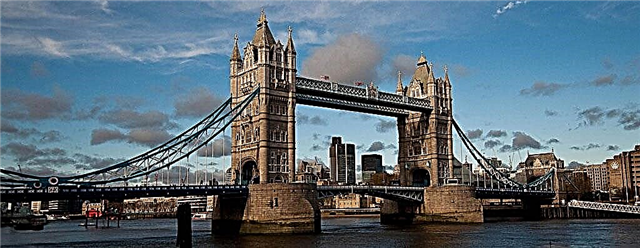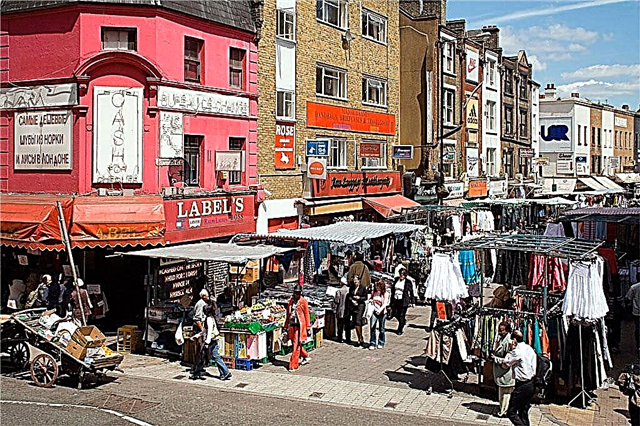The "Gentleman's Pack" for a tourist in London includes sightseeing, known from illustrations for English textbooks. There is no doubt - they really deserve attention. But maybe you should turn off the standard tourist trail and delve into the interweaving of ancient streets, shrouded in a fog of secrets and mysteries? For you, we have prepared a route through London: in the footsteps of Jack the Ripper.
Walk down Mansell Street, turn onto Whitechapel
First, of course, let's pay tribute to history and architecture - Buckingham Palace, Piccadilly Square, Trafalgar Square, Westminster Abbey, Houses of Parliament with Big Ben, Covent Garden, the City financial center and St. Paul's Cathedral. A couple of hours of leisurely stroll - and we get to the extreme eastern point of the standard route - the Tower Fortress and the unique Tower Bridge, the symbol of London and the decoration of the covers of all English language courses.

Admired the Thames, took a picture against the background of the ivy-covered fortress walls? Then - let's go! Follow the Tower Bridge Entrance, climb Mansell Street to Whitechapel Street and turn right. We're in the Whitechapel area. It is here that the most popular, despite its advanced age, London mystery lives.

Whitechapel was and, according to Londoners, will forever remain a "problem" area. Lovers of architectural beauty and aesthetic entertainment have nothing to do here. Practical townspeople come here on Sundays - when life is raging here in the famous markets. Petticoat Lane Market is London's premier outlet for cheap clothing.
Lingerie was traded here at the end of the 17th century (the name of the street is translated as "Alley of petticoats" or, more figuratively, "Woman's kingdom"). Lovers of fashion and accessories are heading to the Brick Lane and Fashion Street markets.
Who needs fresh healthy food - goes to the huge Spitalfields market, and who wants to fill up a loved one with inexpensive flowers - makes his way to the bazaar on Columbia Street. Here they dressed, ate and, as best they could, adorned their lives by the victims of Jack the Ripper.

Cruel invisible
The official history of serial murder on our planet begins on August 31, 1888: early in the morning of that day, less than a hundred meters from the Royal London Hospital, the body of the first victim, Mary Ann Nichols, was found. The fact that this was an unusual murder (and "ordinary" ones were an everyday occurrence here) became clear at once - the woman's throat was not only cut, but part of her internal organs was also cut out ...

However, the police became worried only after the second similar murder - on the morning of September 8, near the Spitalfields market, the body of Annie Chapman was found. But the real panic began after September 27 - that day a letter arrived in Scotland Yard, beginning with the kind words "Dear Chief" and containing an unambiguous promise to "cut off the ladies' ears." It was signed simply - "Jack the Ripper."
At first, the message was considered the work of a "black humorist", but on September 30, the maniac committed two murders at once. At one o'clock in the morning in Whitechapel, a terrible scream attracted the attention of the patrol and passers-by, but they missed the killer for just a minute, and found only the body of the third victim - Elizabeth Stride. The madman did not have time to "gut her" and, apparently, therefore, after a short period of time he struck a new blow.

Catherine Eddows was found on Miter Square, the first and last time the killer had stepped outside Wyatchapel, even though the center of poverty is just a stone's throw from the financial center — all you have to do is walk in a straight line west. He fulfilled his promise: not only removed the entrails from the fourth victim, but also cut off the ear. Raids of reinforced police patrols and hastily created "self-defense squads" forced the maniac to lay low.

However, he clearly did not want to be forgotten: on October 16, the Whitechapel Self-Defense Committee received a letter signed "from hell" and containing the kidney of the unfortunate Catherine Eddows. The maniac committed a new murder on November 9, 1888 - Mary-Jane Kelly died in her apartment, and she was cut up harder than the others. And then Jack the Ripper disappeared - there were no more letters, no more murders.
Not caught, but a thief
The fans of this story (they are called "ripperologists", and there are a great many of them in the world to this day) have a favorite theory: in fact, the culprit was found, but the police concealed his identity. Already after the second murder, rumors spread around London that these were "pranks" of Prince Albert Victor, Duke of Clarens, the grandson of Queen Victoria and a famous pervert with a penchant for violence.
True, at the same time a counterversion was born (perhaps not without the help of the royal court) - they say, the socialist revolutionaries are actually behind the murders, who want to blame the prince, cause an explosion of popular indignation and end the monarchy. Among the suspects, the Queen's close associate Lewis Carroll - yes, the same author of "Alice in Wonderland" is still appearing among the suspects.
By the way, have you ever noticed that this supposedly children's book is very reminiscent of the delirium of a drug addict? However, even during the murders themselves, the police drew attention to the professionalism with which the bodies were "dissected".
The offender clearly had medical training, and therefore the most likely version is that he was Sir William Gull - the Queen's personal physician, who disappeared from view at the end of 1888 and died peacefully in 1890. The version was made practically "official" by two feature films - the magnificent British television film "Jack the Ripper" (1988) with Michael Caine in the title role and the Hollywood action movie "From Hell" (2003) with Johnny Depp.
Spy passions
However, it seems that the following version will interest you most of all: Jack the Ripper was ... our compatriot, Dr. Alexander Pedachenko! Officially, he arrived in London for surgical practice, but in fact he was an agent of the special services of the Russian Empire.
He had a special assignment - to commit a series of terrible crimes in Whitechapel in order to attract special attention of the police to the area and thereby complicate the life of the "Russian revolutionaries" who had entrenched here (whatever nationality they were). The mysterious Aesculapius, among other things, was very interested in transsexuality, could disguise himself as a woman and, therefore, not cause fear among his victims. Pedachenko disappeared from Whitechapel without a trace.
It is believed that the British special services caught him and put him in a psychiatric hospital, but without publicity - so as not to aggravate the international situation. Does this option seem too exotic to you? Then let me remind you of the very recent story of the poisoning in London of a Russian ex-secret service worker, an emigrant, Litvinenko. The British suspect Putin of the crime, and Putin hangs him on Berezovsky who has entrenched himself in London, and the investigation, it seems, will remain unfinished ...
In every joke ...
But back to Jack the Ripper. It could have been much easier. All five victims were "amateur" prostitutes, that is, they did not have the protection of pimps and could well become victims of someone's revenge. In addition, they were all regulars at Ten Bells, the most popular pub in the area, on Commercial Street. It exists to this day, has not changed at all and attracts a lot of tourists.
At the same time, this pub was located in the very center of London crime - around there were all brothels and thieves' raspberries. It is possible that five women became unwitting witnesses to some conversation or event, for which they were killed.
But there is another interesting theory.Among the suspects is journalist Robert Stevenson, who was admitted to Whitechapel Hospital shortly before the first murder and was discharged from it immediately after the last one. He authored several articles on these killings. And what a curious thing it turns out to be - Jack the Ripper can be considered the “inspiring father” of the tabloid press. It was with articles about this maniac that the public's interest in this type of press began. What's more, it looks like it's finally clear to publishers what the public loves to read about the most!
Remember the very recent case of the Norfolk Strangler - even our television reported in detail about each of his victims. But what if Stevenson (or even a hired killer) acted at the direction of the owner of some of the newspapers, and Jack the Ripper is nothing more than a grandiose marketing ploy, on which, by the way, in our time, really make good money a significant part of the tourist business in London? If this sounds like a joke to you, then you don't know what people are capable of to increase circulation. You can take our word for it.
[tp_calendar_widget origin = MOW destination = LON responsive = true subid = ”dzhekapotroshitelya”]
London is the birthplace of the first "recorded" (but not caught) serial killer in the history of mankind. His nickname - "Jack the Ripper" - has since become a household name. "Nothing contributes to the tourism business like mysterious murders!" - argued one of the heroes of the cult thrillers Alfred Hitchcock, and it seems that he was right.
If you are planning to spend a few days in the city, we recommend that you familiarize yourself with the London 3-day guide and free entertainment in London.











